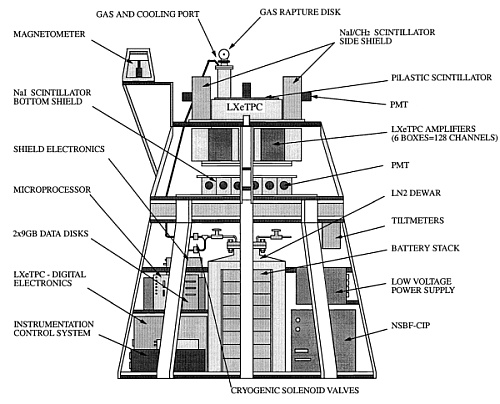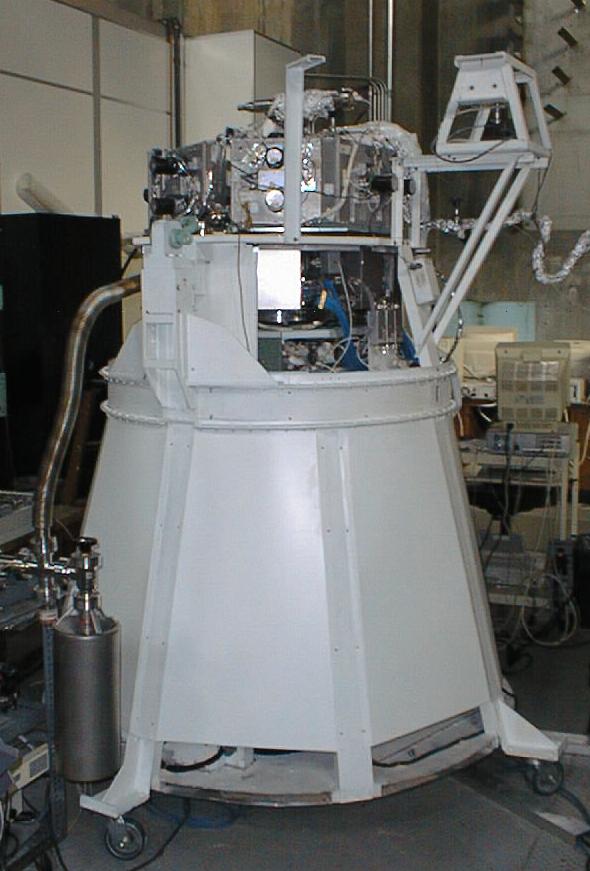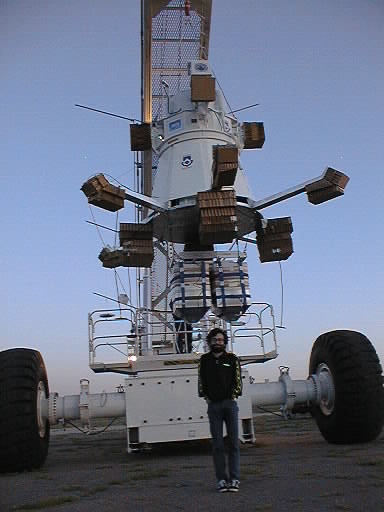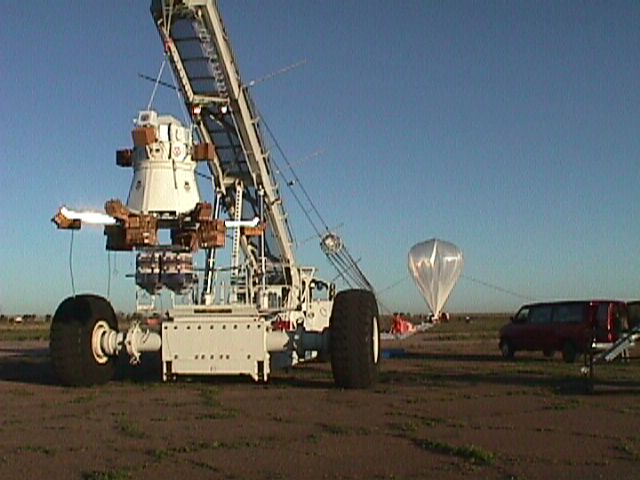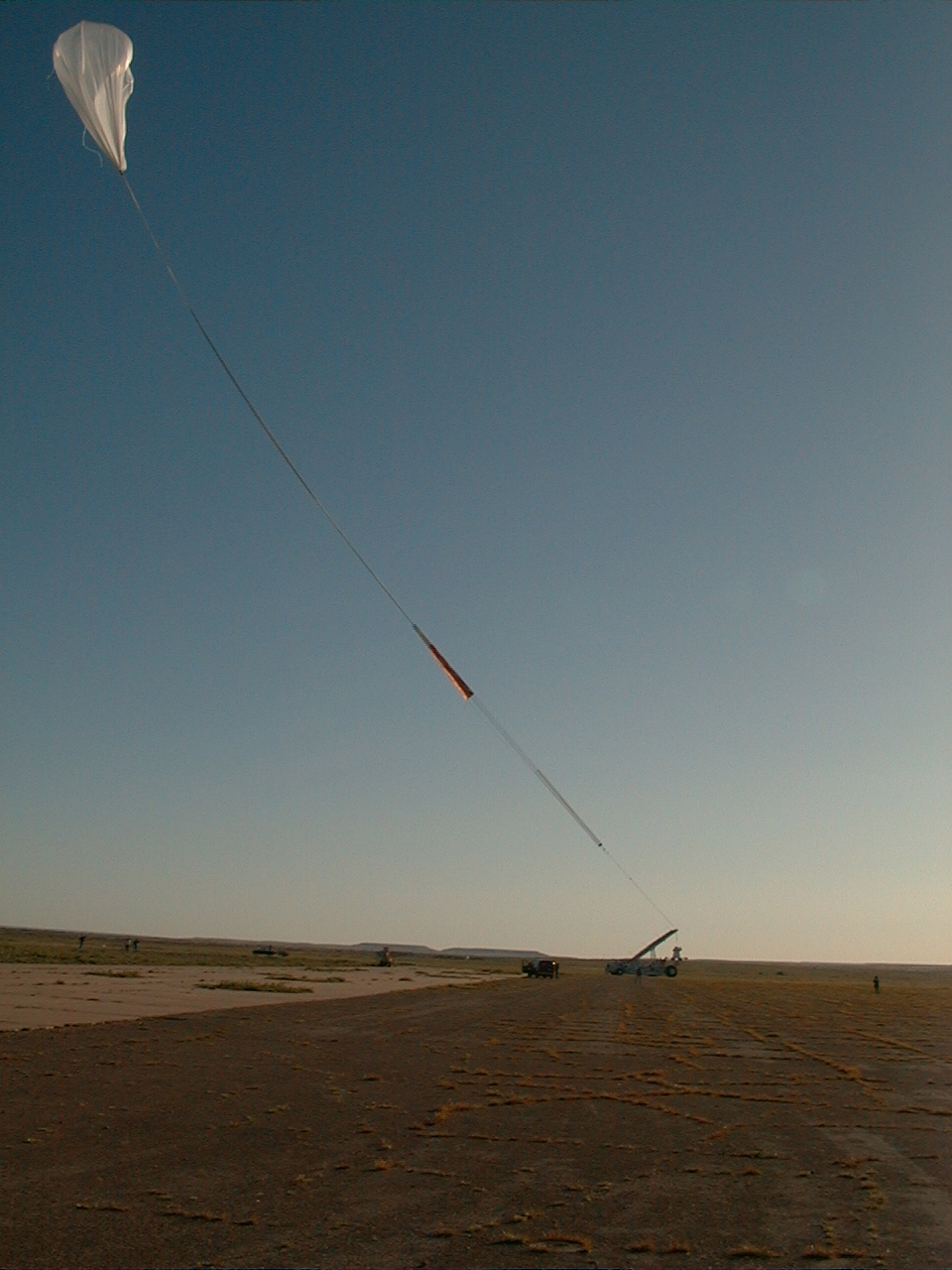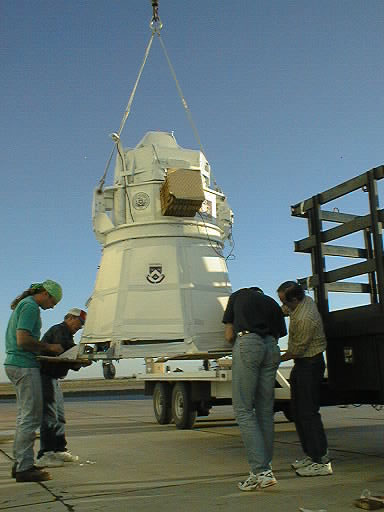Purpose of the flight and payload description
The Liquid Xenon Gamma-Ray Imaging Telescope or LXeGRIT was a balloon-borne Compton telescope designed to capture and image gamma rays in the energy range of 200 keV to 20 MeV. Its core detector was a large-volume liquid xenon time projection chamber (LXeTPC), which operated within a cryogenics system. The instrument featured an angular resolution of approximately 3 degrees at 2 MeV and a field-of-view spanning 1 steradian. LXeGRIT was developed at the Astrophysics Laboratory of the Columbia University, and counted with an extensive collaboration from institutions like the University of New Hampshire, NASA's Marshall Space Flight Center, The Waseda University from Japan and the Istituto Nazionale di Fisica Nucleare from Italy.
At left we can see an scheme of the instrument (click to enalrge). The LXeTPC was the central gamma-ray detector, housed in a 10-liter cylindrical vessel with active dimensions of 20 cm x 20 cm x 7 cm, corresponding to an absorber thickness of 21 g/cm². Electrons ionized within the xenon volume were drifted in a uniform electric field, their positions recorded in three dimensions using a system of orthogonal wire planes and anodes. UV-sensitive photomultiplier tubes detected scintillation light through quartz windows. Xenon gas, purified to high levels, was liquified and maintained at -95°C and 1.5 atm pressure using a controlled flow of liquid nitrogen.
Surrounding the LXeTPC, a shield-veto system reduced background noise from cosmic rays and gamma-ray interactions. This included active side and back shields constructed of NaI(Tl) scintillators and a plastic scintillator counter atop the TPC. The shields worked in tandem with the detector's trigger system to minimize noise and enhance the signal-to-background ratio, allowing precise offline event discrimination.
The instrument's data acquisition system utilized advanced electronics for signal digitization and processing, with the capability to record detailed information about each detected gamma-ray event. A Motorola-based processor managed data acquisition, transmitted portions of the data to the ground via telemetry, and stored the rest onboard. Telemetry and onboard data handling ensured efficient monitoring of the instrument's performance during its flights.
Since LXeGRIT was a Compton telescope that did not require active pointing, the gondola that housed the instrument was engineered to remain passively aligned. Its zenith direction was determined through pitch and roll measurements using precision inclinometers, while azimuth orientation was obtained from dual magnetometers calibrated before the flight. These orientation measurements, combined with geographical positioning data, were essential for analyzing imaging data. The gondola structure incorporated a suspension system that connected it to the balloon, enabling it to withstand stresses during launch, ascent, flight, and recovery. The instrument's sensitive components, particularly the liquid xenon time projection chamber (LXeTPC), were mounted within a robust pressure enclosure and insulated cryostat. These were supported by the gondola framework to maintain alignment and protect against mechanical shocks, such as those experienced during landing.
The LXeTPC and its associated electronics were enclosed in a vacuum-insulated cryostat to reduce heat transfer and maintain the liquid xenon at its operating temperature of -95°C. The gondola carried a liquid nitrogen (LN2) dewar, modified to include a molecular sieve trap for maintaining vacuum conditions. This dewar supplied LN2 to cool the xenon, with solenoid valves controlled by the Instrumentation and Control System (ICS) ensuring precise temperature regulation. The gondola's thermal design also mitigated risks of overheating in reduced-pressure environments at high altitudes.
Power for the gondola and its systems was supplied by a stack of lithium batteries, each rated at 30 Ah, providing sufficient energy for flights lasting up to 40 hours. These batteries powered the cryogenics, instrumentation, and telemetry systems, ensuring uninterrupted operation throughout the mission.
Details of the balloon flight
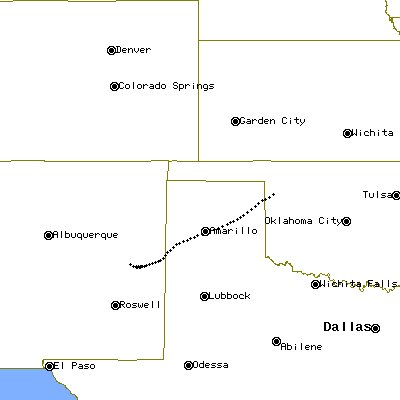
Balloon launched on: 5/7/1999 at 13:26 utc
Launch site: Scientific Flight Balloon Facility, Fort Sumner, (NM), US
Balloon launched by: National Scientific Balloon Facility (NSBF)
Balloon manufacturer/size/composition: Zero Pressure Balloon 800.000 m3 - SF3-424.37-080-NSCH-X-ST
Balloon serial number: W29.47-2X-19
Flight identification number: 464N
End of flight (L for landing time, W for last contact, otherwise termination time): 5/7/1999 at 23:02 utc
Balloon flight duration (F: time at float only, otherwise total flight time in d:days / h:hours or m:minutes - ): 9 h 30 m
Landing site: 10 miles NW of Fairview, Oklahoma, US
The balloon carrying LXeGRIT was launched from NASA balloon base in Ft. Sumner, NM, on May 7, 1999 at 13:26 utc, using a 28 million cubic feet balloon. It reached float altitude after about 2.5 hours, and remained there for 7 hours, before flight termination due to wind conditions. The payload was recovered in good conditions 10 miles NW of Fairview, Oklahoma. Only mechanical damage was suffered by the magnetometers and three side shield units.
The main goal of the flight was a measurement of the background rate in the instrument and to verify the background discrimination capability of the LXeTPC. To verify the Compton imaging performance, the launch time was scheduled such as to have the Crab nebula in the field of view of the instrument for a few hours, once the payload reached float altitude. LXeGRIT performed well during the flight: a total of 285966 events were collected. Only a few problems were encountered with some of the side shield units. The loss of telemetry contact with the ICS for a major part of the flight did not impact the science data.
External references
- A Study of the LXeGRIT Detection Efficiency for MeV Gamma-Rays during the 2000 Balloon Flight Campaign submitted to NIMA
- Compton Imaging of MeV Gamma-Rays with the Liquid Xenon Gamma-Ray Imaging Telescope (LXeGRIT) submitted to NIM A
- LXeGRIT - A Liquid Xenon Gamma-Ray Imaging Telescope Columbia University website
- Preliminary Results from the 1999 Balloon Flight of the Liquid Xenon Gamma-Ray Imaging Telescope (LXeGRIT) X-Ray and Gamma-Ray Instrumentation for Astronomy XI, 2000; Proc. SPIE, vol. 4140
- Successful Balloon Flight of the Liquid Xenon Compton Telescope (LXeGRIT) HEAD Newsletter No. 74 May 1999
657If you consider this website interesting or useful, you can help me to keep it up and running with a small donation to cover the operational costs. Just the equivalent of the price of a cup of coffee helps a lot.

